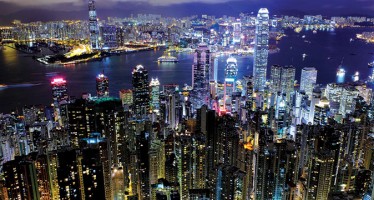Erajaya Raises $100 Million From Indonesian IPO
 The Indonesian mobile retailer sells 32% of its share capital at the bottom of the price range. Meanwhile, New World Development’s rights issue ends significantly oversubscribed.
The Indonesian mobile retailer sells 32% of its share capital at the bottom of the price range. Meanwhile, New World Development’s rights issue ends significantly oversubscribed.
Indonesia’s biggest retailer of mobile phones and other wireless communication products, Erajaya Swasembada, has raised about Rp920 billion ($100 million) from its initial public offering after fixing the price at the bottom of the range.
The company also sold only 32% of its share capital, or 920 million shares, as the management felt it didn’t want to sell any more at that price and $100 million was enough to cover its capital needs. These include the repayment of an $84 million promissory note issued in connection with the acquisition of fellow mobile distributor Teletama Arta Mandiri (TAM) earlier this year. Erajaya initially offered up to 40% of the share capital, although it said that the final size would be capped at $200 million, which at the top end of the price range would have meant a slightly smaller deal size in percentage terms.
Sources said the total order amount was enough to cover the full 40%, but most buyers were price sensitive. About 70% of the demand came from domestic investors, with the rest split between international long-only investors and hedge-funds, including some quite lumpy orders. The allocation was similar to the demand in terms of the domestic/international split, but the source noted that the deal was tightly allocated with the top five accounts getting about 50% of the deal. A key reason for that is that the deal doesn’t have a greenshoe and a tight allocation should help limit the selling when the stock starts trading.
In all about 40 investors participated in the transaction.
One reason for the small number of accounts is likely to be the risk of investing in Indonesian IPOs, particularly while markets are as volatile as they have been in the past few months. The lead time between pricing and the trading debut is quite long in most Asian markets, but it is especially long in Indonesia. Erajaya closed its order books last Monday (except for a few accounts in Boston that met with the company on Tuesday) and fixed the price on Wednesday, but won’t start trading until December 14.
The MSCI Asia ex-Japan index also fell about 8% during Erajaya’s bookbuilding, which kicked off on November 17.
These issues, in combination with the fact that it is so late in the year, seem to have overshadowed Erajaya’s strong position in the Indonesian mobile phone market, where 95% of all mobile subscriptions are pre-paid. According to Frost & Sullivan, the company has a market share of 24%, compared with just 17% for the number two retailer. Indonesia is the third-largest wireless market in Asia.
One syndicate analyst projects that Erajaya will generate profit growth of about 38% between 2011 and 2013, partly driven by the recent acquisition of TAM and an improvement of margins as its portfolio of brands is integrated into its own.
The company operates 236 retail stores in 27 cities and also has a partnership with more than 16,000 third-party resellers. It is licensed to distribute 11 different mobile brands, including Apple, Acer, Huawei, LG, Nokia, Sony Ericsson and its own brand Venera. The acquisition of TAM also added the Blackberry brand to its portfolio and strengthened its position with regard to Samsung.
However, with the deal coming so close to the Christmas holidays, in an extremely challenging market environment and with several billion-dollar-plus IPOs in Hong Kong also competing for investors’ attention, it is no big surprise that international investors were not rushing in.
Erajaya initially offered up to 1.32 billion new shares at a price between Rp1,000 and Rp1,440 and ended up selling 920 million shares at Rp1,000 apiece.
The final price translates into a 2012 price to earnings multiple of 7.7 times, which is fairly attractive for a consumer retailer. However, that was clearly needed as the demand came in mainly at the low end of the range. There are no listed direct comparables in Indonesia, but some investors were said to be looking at Synnex Technology in Taiwan, a retail chain focusing on computers, mobile phones and other home electronics, which trade at 2012 P/E multiple of 14.5 times.
Erajaya was brought to market by Buana Capital, Credit Suisse and J.P. Morgan.
Meanwhile, in Hong Kong, New World Development said last week that its HK$11.3 billion ($1.45 billion) one-for-two rights issue was 309.1% subscribed. The shares were offered at a price of HK$5.68 apiece, which translated into a 36.9% discount versus the close of HK$9.00 on October 18 — the day before the fund-raising was announced. It also worked out as a 28% discount versus the theoretical ex-rights price (Terp) of HK$7.89 on that same day and a 78.2% discount to the company’s net asset value of HK$26.01 as of June 30 this year.
Since the announcement the share price has fallen quite significantly, however, and when the subscription period closed on November 22 it was quoted at HK$6.78. This means the rights issue discount to the latest close had shrunk to just over 16%. On Friday the share price closed at HK$6.62.
The property-to-retail conglomerate will use a large portion of its rights issue proceeds to subscribe to its 69% entitlement in a HK$4.29 billion ($550 million) rights offering by New World China Land that was announced at the same time but will be open for subscription until December 19. New World Development will also act as the sole underwriter for the rest of the New World China Land issue.
New World Development’s right issue had the support of Chow Tai Fook Enterprises, which is owned by New World Development chairman Cheng Yu-tung. The entity took up its 40.5% entitlement in full and also underwrote an additional 90 million shares, or up to 45% of the deal. The rest was underwritten by joint bookrunners HSBC and Standard Chartered. However, with the strong subscription ratio, the underwriters won’t need to buy any shares.
And on Friday, China Outfitters Holdings, a designer of casual menswear, completed its HK$1.13 billion ($145 million) IPO that was offered at a fixed price of HK$1.64 per share. A source estimated that the deal had attracted as many as 50 institutional investors, mainly from Asia but with some participation from long-only European and US funds as well.
The 10% retail portion was about 10 times covered. While the deal was small, this is at least an encouraging sign after retail investors have shunned most other Hong Kong IPOs in the past three months. The deal was already 76% covered at launch by three cornerstone investors and when you take away the 10% allocated to retail investors, there weren’t many shares left for other institutional investors.
The company sold 691.56 million shares, or about 20% of the share capital. Some 69.4% were new shares. The deal size could increase to as much as $167 million if a 15% greenshoe is fully exercised.
The deal was a return to market for China Outfitters, which tried to raise up to $300 million from an IPO in June but was forced to call off the attempt before pricing after failing to attract enough demand. This may explain why it was so aggressive about signing up cornerstone investors this time around. Everbright Private Equity, KKR Apparel and the Sequoia Funds jointly bought $110 million worth of shares.
The stock is scheduled to start trading on December 9. BOC International, Daiwa, ICBCI, RBS and UBS were joint bookrunners.
By Anette Jönsson for FinanceAsia
You may have an interest in also reading…
Grant Thornton Hong Kong: M&A – Cultural Alignment for Successful Integration
Too often companies put together look great on paper but are fraught with management and structural problems that end up turning
Kiran Shaw and Biocon: What a Team
Kiran Mazumdar Shaw is the founder and managing director of Biocon which is one of Asia’s leading biotech enterprises. Shaw’s
Thai Life’s Immodest Aim: To be the Best (and Most Sustainable) Company in the Insurance Sector
Building strength for the firm, and all Thai society. Thai Life Insurance Public Company keeps its focus where CEO Chai


















































































